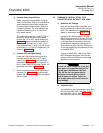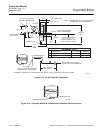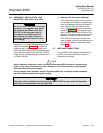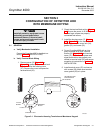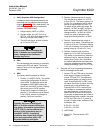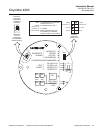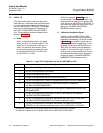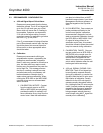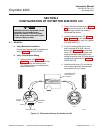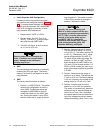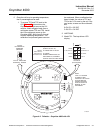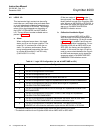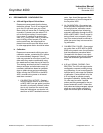
Instruction Manual
IB-106-340 Rev. 3.0
December 2003
Rosemount Analytical Inc. A Division of Emerson Process Management Configuration with Keypad 3-5
Oxymitter 4000
3-3 RECOMMENDED CONFIGURATION
a. 4-20 mA Signal Upon Critical Alarm
Rosemount recommends that the factory
default be utilized. The 4-20 mA signal will
go to the 3.5 mA level upon any critical
alarm which will cause the O
2
reading to
be unusable. Customer can also select
21.6 mA as the failure setting if normal
operations cause O
2
readings to go below
the zero % O
2
(4 mA) level.
If the O
2
measurement is being utilized as
part of an automatic control loop, the loop
should be placed into manual upon this
failure event or other appropriate action
should be taken.
b. Calibration
Rosemount recommends utilizing an
autocalibration system, actuated by the
“calibration recommended” diagnostic.
New O
2
cells may operate for more than a
year, but older cells may require recali-
bration every few weeks as they near the
end of their life. This strategy ensures
that the O
2
reading is always accurate,
and eliminates many unnecessary cali-
brations based on calendar days or
weeks since previous calibration. When
utilizing the SPS 4000 or the IMPS 4000,
consider wiring some or all associated
alarm contacts.
1. CALIBRATION INITIATE. Contact
from the control room to an SPS
4000 or IMPS 4000 (one per probe)
provides the ability to manually initi-
ate a calibration at any time from the
control room. Note that calibrations
can also be initiated from a HART
handheld communicator, from Asset
Management Solutions software, or
from the keypad on the Oxymitter
4000.
2. IN CALIBRATION. One contact per
probe provides notification to the
control room that the “calibration
recommended” diagnostic has initi-
ated an automatic calibration through
the SPS 4000 or IMPS 4000. If the
O
2
signal is being utilized in an
automatic control loop, this contact
should be utilized to place the control
loop into manual during calibration.
3. CALIBRATION FAILED. One con-
tact per probe from an SPS 4000 or
IMPS 4000 to the control room for
notification that the calibration pro-
cedure failed. Grouped with this
alarm is an output from a pressure
switch which indicates when the cali-
bration gas bottles are empty.
4. 4-20 mA SIGNAL DURING CALI-
BRATION. The 4-20 mA signal can
be configured to respond normally
during any calibration, or can be con-
figured to hold the last O
2
value upon
the initiation of calibration. Factory
default is for the 4-20 mA signal to
operate normally throughout calibra-
tion. Holding the last O
2
value may be
useful if several probes are being av-
eraged for the purpose of automatic
control. Unless several probes are
being averaged, always place any
control loops using the O
2
signal into
manual prior to calibrating.



